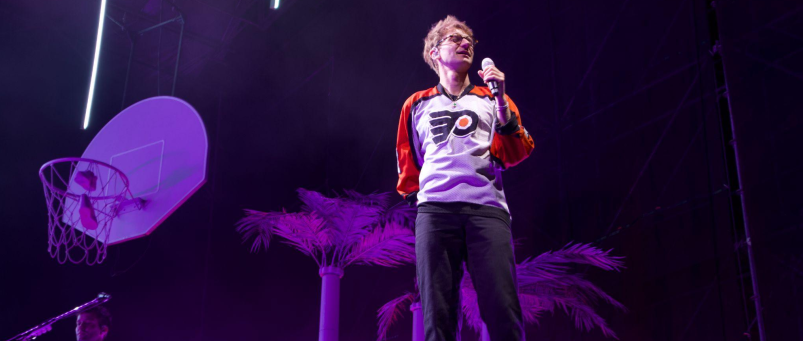Remember Skam, the Norwegian TV show that blew up and became an international success? If you’re not familiar with it, here’s a quick recap: the show featured a group of 16 to 18 year-old teenagers at a gymnasium, the Norwegian equivalent of high school, with each of the four seasons being from one character’s perspective. The show dealt with everything from LGBT+ to mental health issues to religion to identity and stood out because of how realistically it managed to portray youth culture.
One of the reasons it got famous was its unique format; instead of broadcasting an episode a week like normal, the different scenes were published online at the same time as they happened in the show throughout the week, along with text conversations and social media updates from the characters. The show was also popular because of the diverse stories it told; one of the seasons was centered around a homosexual relationship while another was from the perspective of a Muslim girl.

Skam Norway
Now, Skam has become a worldwide phenomenon as country after country is remaking the show after it was canceled last year for its rights to be sold internationally.
The U.S., Germany, Italy and France are currently airing their own versions of Skam, all with the same concept, characters and story lines. Spain and the Netherlands will broadcast remakes as well in the future. The countries hope to recreate Skam’s success and unique concept since the Norwegian show went viral and became loved by such a diverse range of people. In Sweden where I used to live, there was a form of fever last year where everyone and anyone watched and talked about Skam, including most adults and those who initially were skeptic to it.
As someone who watched the original show, it is certainly a bit bizarre to see it being remade. Imagine following a show and then watching it being redone over and over with other actors who speak other languages. But, is it working? Here’s a breakdown of all the versions – and if they’re worth a watch or not.
The American Version (SKAM Austin)
This version has been the most anticipated one and is now in on its fourth week. It is directed by Julie Andem, the same director as the Norwegian version and is broadcasted on Facebook Watch. It also seems to be the remake that deviates the most from the original show. While it has been moderately successful so far, it is questionable if the sometimes slow pace and low-budget feel will please any large American audience, who are used to flashier and more dramatic high school dramas. On the other hand, there is still hope for it to become a success, after all, many viewers could find its realistic, down-to-earth style refreshing. Whether you’ve watched the original Skam before, or you’re new to the concept, this version is worth a try, although the first two episodes are a bit slow. Even though it definitely doesn’t measure up to the original in my opinion, it is unique enough not to be boring for any previous Skam-watcher. Do you live in the U.S.? Check it out and see if it’s for you, or head to Skam Norway first instead.
https://www.instagram.com/p/BiYILmIlIcU/
The German and Italian Version
The German and Italian adaptations have been quite well-received by the Skam fanbase. The German one (called Druck) closely mirrors the Norwegian one though, so there’s still a high risk that you’ll find it boring if you’ve watched Skam before. If you haven’t, you might as well watch the original Skam in this case. The Italian remake has received quite a lot of positive criticism, so it might be worth checking out if you were really into the original. If you’re German, Italian or a die-hard fan, try it, otherwise these versions will probably not be for you.
The French Version
https://www.instagram.com/p/Bibm14rl-s7/
Again, unless you’re French and haven’t watched Skam before, you probably won’t like the adaptation. Based on the parts of it that I have watched, the French version feels straight-up off, especially since its manuscript is very similar to the original show, which makes everything feel a bit forced.
Was the potential of Skam lost?
Here’s the thing: Skam stood out because of the research it did into Norwegian youth culture in order to create characters that actually talked, acted, and looked like real Norwegian teenagers. Its authenticity was on an entirely different level than any teen drama before it, which ultimately was what made the show unique and successful. Therefore, a part of Skam’s potential was lost when it was replaced by other countries’ imitations of the storylines and characters. If the other adaptations solely used the same concept regarding the way it was updated throughout the week and took notes of what made the show feel authentic instead of replicating everything, Skam could have been used to tell new, culture-specific stories instead.
Even though some details have been altered in the different versions to fit the specific cultures, I still believe that it would be more meaningful the remakes to follow a more different path from its original. The first three weeks of the American version provide hope that it will become more independent, especially since it seems like Julie Andem, the director of both SKAM Austin and Skam Norway, don’t want to refilm the exact same show she did previously.
Despite it all, it is good that Skam’s legacy lives on in some way. Even though the new versions could have been done differently, it is still positive that more people all across the world get to follow these important stories, and perhaps even recognize themselves in parts of it.
The Skam phenomenon will probably continue to live on in the next few years, and although the some of the show’s opportunities were lost, it is still better than if the show simply were forgotten by the world.
Cover Image Courtesy of ©obs/ZDF/Gordon Muehle











